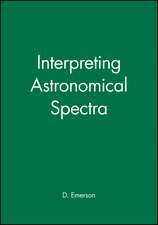Polarization Engineering for LCD Projection: Wiley Series in Display Technology
Autor M. Robinsonen Limba Engleză Hardback – 19 mai 2005
Din seria Wiley Series in Display Technology
- 24%
 Preț: 694.80 lei
Preț: 694.80 lei - 24%
 Preț: 691.98 lei
Preț: 691.98 lei - 9%
 Preț: 1287.71 lei
Preț: 1287.71 lei - 9%
 Preț: 1103.14 lei
Preț: 1103.14 lei - 9%
 Preț: 778.46 lei
Preț: 778.46 lei - 9%
 Preț: 698.52 lei
Preț: 698.52 lei - 8%
 Preț: 681.04 lei
Preț: 681.04 lei - 9%
 Preț: 878.55 lei
Preț: 878.55 lei - 9%
 Preț: 729.76 lei
Preț: 729.76 lei - 8%
 Preț: 622.37 lei
Preț: 622.37 lei - 9%
 Preț: 793.56 lei
Preț: 793.56 lei - 9%
 Preț: 967.86 lei
Preț: 967.86 lei - 9%
 Preț: 831.11 lei
Preț: 831.11 lei - 9%
 Preț: 778.96 lei
Preț: 778.96 lei - 9%
 Preț: 895.36 lei
Preț: 895.36 lei - 9%
 Preț: 980.23 lei
Preț: 980.23 lei - 9%
 Preț: 763.60 lei
Preț: 763.60 lei - 32%
 Preț: 750.38 lei
Preț: 750.38 lei - 32%
 Preț: 978.40 lei
Preț: 978.40 lei - 32%
 Preț: 694.68 lei
Preț: 694.68 lei - 31%
 Preț: 840.67 lei
Preț: 840.67 lei - 32%
 Preț: 538.13 lei
Preț: 538.13 lei - 30%
 Preț: 552.50 lei
Preț: 552.50 lei - 31%
 Preț: 536.22 lei
Preț: 536.22 lei - 30%
 Preț: 558.02 lei
Preț: 558.02 lei
Preț: 886.31 lei
Preț vechi: 973.96 lei
-9% Nou
Puncte Express: 1329
Preț estimativ în valută:
169.62€ • 176.43$ • 140.03£
169.62€ • 176.43$ • 140.03£
Carte tipărită la comandă
Livrare economică 14-28 aprilie
Preluare comenzi: 021 569.72.76
Specificații
ISBN-13: 9780470871058
ISBN-10: 0470871059
Pagini: 308
Dimensiuni: 180 x 255 x 24 mm
Greutate: 0.72 kg
Editura: Wiley
Seria Wiley Series in Display Technology
Locul publicării:Chichester, United Kingdom
ISBN-10: 0470871059
Pagini: 308
Dimensiuni: 180 x 255 x 24 mm
Greutate: 0.72 kg
Editura: Wiley
Seria Wiley Series in Display Technology
Locul publicării:Chichester, United Kingdom
Public țintă
Practising electrical engineers, optical engineers, material scientists, physicists and chemists entering the field of displays; Specialists involved in the development of large screen projection displays and microdisplays; Business analysts and government advisors examining the future directions of display technology; Manufacturers and researchers of LCD and microdisplay technologies; Graduate students following display systems courses.Cuprins
Series Editor's Foreword.
Preface.
1 Introduction.
1.1 The Case for Projection.
1.2 History and Projection Technology Overview.
1.3 Scope of the Book.
2 Liquid Crystal Projection System Basics.
2.1 Introduction.
2.2 Brightness and Color Sensitivity of the Human Eye.
2.3 Photometric Measurement.
2.4 Summary of What Constitutes a "Good" RPTV Display in the Current Marketplace.
2.5 System Engineering.
2.6 Étendue Considerations.
3 Polarization Basics.
3.1 Introduction.
3.2 Electromagnetic Wave Propagation.
3.3 Interaction with Media.
3.4 Index Ellipsoid Visualization.
3.5 Modeling Techniques.
4 System Components.
4.1 Introduction.
4.2 Retarders.
4.3 Polarizers.
4.4 Interference Filters.
4.5 Polarizing Beam Splitters (PBSs).
4.6 Other Components.
5 Liquid Crystal Displays (LCDs).
5.1 Description and Brief History.
5.2 Anisotropic Properties of Liquid Crystals.
5.3 Frank Free Energy and Electromagnetic Field Contribution to Free Energy.
5.4 Alignment Layer and LC Pretilt Angle.
5.5 Rotational Viscosity.
5.6 Electro-optical Effect of LCs.
5.7 LC Modes for Projection.
5.8 FOV of LCDs.
6 Retarder Stack Filters.
6.1 Introduction.
6.2 Principle and Background of RSFs.
6.3 RSFs in LC Projection Systems.
6.4 Design of RSFs.
6.5 Properties of Retarder Stacks.
7 System Contrast.
7.1 Introduction.
7.2 On-axis Contrast.
7.3 Off-axis Effects.
7.4 PBS/LCOS Compensation.
7.5 ANSI Contrast Enhancement.
7.6 Skew Ray Compensated Retarder Stack Filters.
7.7 Alternative Projection Systems.
7.8 Overall System Contrast.
8 Color Management.
8.1 Introduction.
8.2 System Color Band Determination.
8.3 Color Management in Projection Systems.
9 Transmissive Three-panel Projection System.
9.1 Introduction.
9.2 Brief System Description.
9.3 System Throughput.
9.4 Contrast.
9.4.1 Negative c-plate Compensation.
10 Three-panel Reflective Systems.
10.1 Introduction.
10.2 3×PBS/X-cube System.
10.3 Polarization Color Filter Systems.
10.4 Three-panel LCOS System Comparison.
11 Single and Dual Panel LC Projection Systems.
11.1 Introduction.
11.2 Generic Color Sequential Single Panel Reflective LC System.
11.3 Example Single Panel Color Sequential Systems.
11.4 Two-panel Systems.
11.5 Commercialized Single Panel Projection Systems Based on Spatial Color Separation.
Appendix A.
Index.
Notă biografică
Jianmin Chen, Colorlink Inc, Boulder, CO, USA
Dr Chen has published over 50 articles over 15 years in the fields of silicon defects, High Tc superconductors, liquid crystal physics and devices, and, more recently, projection display systems. Prior to joining Colorlink, he worked as a research scientist in the flat panel research group of Polaroid Corporation. Sophisticated simulation software developed by Dr. Chen has been used in many companies and research institutes around the world to simulate the optics phenomena at the system level in liquid crystal display and projection system. He holds five issued US patents and has been working in the LCD field for more than 10 years.
Dr Chen has published over 50 articles over 15 years in the fields of silicon defects, High Tc superconductors, liquid crystal physics and devices, and, more recently, projection display systems. Prior to joining Colorlink, he worked as a research scientist in the flat panel research group of Polaroid Corporation. Sophisticated simulation software developed by Dr. Chen has been used in many companies and research institutes around the world to simulate the optics phenomena at the system level in liquid crystal display and projection system. He holds five issued US patents and has been working in the LCD field for more than 10 years.
Michael G Robinson Director of Product Engineering, Colorlink Inc, Boulder, CO, USA
During his career he has published in excess of 50 papers and has been granted in excess of 40 international patents. Best known for his work on the ColorQuad architecture, he has established a reputation for academic excellence amongst researchers and engineers in the international field of Optical Systems Engineering.
Gary D. Sharp Vice President, Colorlink Inc, Boulder, CO, USA
Dr Sharp has over 80 issued/pending patents, and over 40 journal publications and conference presentations to his name. He is the co-founder of Colorlink.
Descriere
A unique treatment of polarization engineering focusing on Liquid Crystal Display projection systems, Polarization Engineering for LCD Projection explains how the performance and functionality of high definition displays can be improved through an understanding of polarization principles.
















